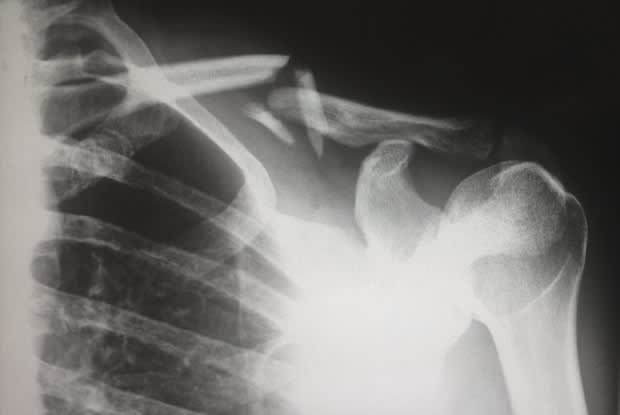Table of Contents
Understanding Seizures
Seizures are serious neurological disorders that create uncontrolled electrical disturbances in the brain. If a seizure occurs, you or people around you may notice changes in your behavior, movements, and levels of consciousness. Seizures may be a one-time medical event, but you may be diagnosed with epilepsy if you experience recurring seizures. Other symptoms of seizures may include:
- Temporary confusion
- Cognitive changes
- Emotional symptoms, like fear or anxiety
- Uncontrollable jerking movements of the legs and arms
There are several types of seizures, and you may be prescribed Keppra (levetiracetam), Topamax (topiramate), Dilantin (phenytoin), or Lamictal (lamotrigine) to assist in seizure symptoms. If you follow your doctor’s treatment plan, your frequency of seizures should decrease and improve your quality of life. Of course, none of these medications can cure epilepsy, so complications are always a risk. Read on to learn more about complications that can occur with seizure disorders. [1]
Many people who experience seizures report that they often occur in a pattern or are more likely to occur in certain situations. Some people have reflex epilepsy, which means that their body may respond to stimuli like flashes, lights, or noises. If you live with a chronic seizure disorder, it is important to identify your triggers and avoid them whenever possible. Everyone has their own specific triggers, but common ones include: It is important to avoid your triggers when possible to prevent a seizure. If you are prone to seizures, you have to be more cognizant of your surroundings to prevent injury to yourself or others. [2] Not all seizures cause a person to fall to the ground, but you need to take extreme cautions if that is one of your common symptoms. If you often fall to the ground during a seizure, you are at an increased risk of experiencing injuries like broken bones or a dislocated shoulder. Bone fractures are the most common injury for those with epilepsy. This occurs when the body seizes and is unable to activate protective reflexes. These muscle contractions also put a great load on the skeleton, increasing the risk of bone breakages. Some anti-epileptic medications can also reduce bone density, which makes fractures even more likely. Shoulder dislocations are rarer but do occur every once in a while. A person is at risk of shoulder dislocation if they are lying on their side during a seizure. If they lay on their back during their seizure, the risk of dislocation is lowered. But after the seizure, the person should be positioned on their side to reduce their risk of aspiration. [3] Aspiration can be an incredibly dangerous complication of seizures and epilepsy. By definition, aspiration occurs when something you swallow enters the airways or the lungs. It may also occur if something goes back into your throat from your stomach. The airway is not completely blocked. Symptoms of aspiration include: This condition can happen to anyone, but if you are eating or drinking and experience a seizure, aspiration is much more likely. Normally, the body has several reflexes to prevent food or liquid from entering the airways, but these reflexes do not activate during a seizure. This is why a person is usually turned on their side after a seizure to avoid aspiration. Over time, aspiration can result in aspiration pneumonia. This occurs when food or liquid continually gets into the airways or the lungs and causes infection, inflammation, or airway obstruction. [3] Anaerobic pleuropneumonia syndrome can occur in seizure patients who often experience loss of consciousness or altered mental states. You may have this condition if you develop a cough that produces foul-smelling saliva and mucus mixture (sputum). Along with this unpleasant symptom, cavitary pneumonia can also alter the lung architecture and create a cavity. A collection of pus can also develop, lining the fluid-filled space between the pleura of each lung. This is known as empyema. If these pneumonia complications are left untreated, they can cause dangerous bacteria to enter the bloodstream and lead to infections in other parts of the body. [3] As mentioned earlier, seizures can strike at any time, making driving a car or motor vehicle incredibly dangerous. If you are driving and lose consciousness, you can put yourself at risk and those around you. On top of that, several seizure medications can cause drowsiness. If you are diagnosed with epilepsy, a doctor may restrict your driving to prevent the likelihood of a seizure-related car accident. These restrictions are complicated because life without a mode of transportation can be difficult, especially if you live in an area with limited public transit. It depends on your condition, but you will likely not be allowed to drive if you had a seizure within the last three to six months. Make sure to stay on top of your seizure medications like Keppra (levetiracetam), Topamax (topiramate), Dilantin (phenytoin), or Lamictal (lamotrigine) to improve your everyday life and reduce your chance of seizures. [5] The content in this article is intended for informational purposes only. This website does not provide medical advice. In all circumstances, you should always seek the advice of your physician and/or other qualified health professionals(s) for drug, medical condition, or treatment advice. The content provided on this website is not a substitute for professional medical advice, diagnosis, or treatment.
Possible Seizure Triggers
Injuries from Falling

Aspiration
Pleuropneumonia Syndrome

Car Accidents
